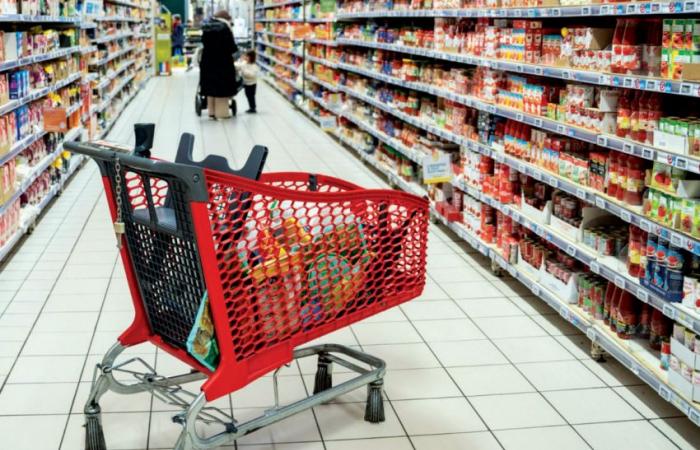Shile 2022 was dominated by inflation fueled by external shocks – notably via import prices inflated by the pandemic and disruptions to supply chains – other factors came into play in 2023 and 2024. Despite the slowdown in inflation, prices on the shelves remain high, even with a disinflationary trend that began in February.
The causes are multiple: climatic shocks disrupting local production of fruits and vegetables, opportunistic behavior of certain companies and a competitive context that is struggling to adjust. The consumer continues to pay for products whose prices have not followed the downward curve of inflation. Please note, a drop in inflation does not mean that prices are falling. This simply indicates that prices are still increasing, but at a slower rate. Thus, although inflation slowed to +1.7% in August 2024, the Consumer Price Index (CPI) reached 119.7, marking an increase of 13% since February 2022. Price levels current prices therefore remain much higher than those of recent years, creating constant pressure on purchasing power. For example, the food subindex increased from 103.1 in 2021 to 131.5 at the end of August, an increase of almost 27.5%.
This surge is due to factors such as local production disruptions, raw material costs and opportunistic market behavior. Non-food products are not left out, with an increase in the CPI from 104.4 to 110.3 between 2021 and 2023, affecting essential expenditure items such as transport or services. Therefore, even though inflation slows, high prices persist. “There is a real gap between what households read in official inflation figures and what they feel on a daily basis. For them, inflation is not only measured in percentage, but in dirhams spent. To be more precise, past increases have already been absorbed into family budgets, and this disinflation does not erase previous increases. Companies don’t necessarily adjust their prices downward because they want to maintain the margins they gained during periods of high inflation. Result: the consumer does not feel any real improvement and suffers from this persistence of high prices as a new normal,” explains Rachid El Fadili, professor of economics at Hassan II University in Casablanca.
Mechanisms to monitor
But that’s not all: new business practices have surfaced, intensifying the sensation of rising prices despite disinflation. In fact, some companies are adopting strategies to protect their margins, or even increase them, at the expense of consumers. Three phenomena, in particular, deserve to be closely monitored: cupidflation, shrinkflation and cheapflation. They show that even if inflation moderates on the macroeconomic level, its effects continue to weigh on the daily lives of households through subtle, but impactful tactics.
Cupidflation – a contraction of “greedy” and “inflation” or “greedflation” in English – refers to the practice of companies exploiting their market power to inflate their prices beyond what production costs justify. Theorized in 2023 by economists Isabella Weber and Evan Wasner, cupidflation highlights how certain firms maximize their margins thanks to generalized inflation, by anticipating that consumers will not question a price increase as long as it remains “within the range”. standard”.
Shrinkflation adds to these practices by discreetly reducing the quantity of product contained in packaging without changing the price, or worse, by increasing it. For example, some brands of baby diapers have reduced the number of pieces per package without affecting the price. The same phenomenon is observed with bottles of soda, packets of biscuits, or even paper tissues and liquid soaps whose weight decreases while the cost per unit increases. Coffee and tea are no exception, also experiencing notable weight reductions.
This practice also affects the pharmaceutical sector with boxes of medicines presenting a new format with fewer tablets. Thing that was notably denounced by the Moroccan Federation of Consumer Rights. Finally, cheapflation – from the English word “cheap” meaning “cheap” – replaces the ingredients of a product with less expensive or lower quality components, without adjusting the price. For example, a chocolate can contain less cocoa and more sweet substitutes, or a soap with fewer natural raw materials. Consumers, for their part, often remain in the dark about the real modifications of the product. “In the Moroccan context, there is also a cultural factor: consumers tend to accept these price increases or quantity reductions without complaining too much. Companies know this and take advantage of it by imposing these techniques. It’s a vicious circle: as long as customers don’t protest or change brands, these practices will continue to exist. This is why cupidflation or shrinkflation often goes unnoticed; consumers tell themselves that it’s ‘like that’ and end up silently adjusting their consumption habits,” adds el Fadili.
Disinflation to qualify
On another note, the Competition Council report underlines that the slight recovery in household consumption in 2023 could have exerted upward pressure on prices. However, this consumption remained below the threshold necessary to cause excess demand. Paradoxically, despite inflation at 1.7%, prices continue to appear high to households, due to the accumulation of previous increases and progressive adjustments to prices. The moderation of this inflation is also due to the slowdown in credit granted to households, a consequence of a tightening of monetary policy.
In 2023, credit growth fell from 3.6% in 2022 to 2%, slowing down the leverage effect on consumption and favoring relative disinflation. However, the phenomenon remains fragile, because the drop in inflation has not yet impacted retail prices. The perception of persistent inflation helps fuel opportunistic practices, such as cupidflation, which play on price inertia. Competition, state aid and market balance Competitive intensity also remains at the heart of the debate on the stabilization of inflation. According to the Competition Council, it must ensure optimal prices in the long term. But inflation itself can have a deleterious effect on this competition. State aid, essential in certain sectors, must be administered with transparency and neutrality to avoid any distorting effect on the market.
Furthermore, the Council draws attention to the temptation of companies to coordinate their actions to preserve margins, which can lead to an implicit agreement on prices, to the detriment of the consumer. This “protection of profits” reinforces the phenomenon of cupidflation and, ultimately, disrupts the healthy functioning of markets. “In fact, competition is supposed to play a role of natural regulator. But when these practices become widespread, we realize that competition is no longer as effective as it should be. Companies, especially those specializing in mass consumption, model themselves on each other’s strategies, and the consumer ends up finding themselves without real alternatives,” notes the economist.
Ultimately, it is clear that the cumulative effects of cupidflation, shrinkflation and cheapflation directly affect the feelings of households. The stagnation of prices, despite officially falling inflation, creates a disconnect between economic indicators and the reality of the household basket. For the consumer, every purchase becomes a calculation: pay more for less, or pay the same price for lower quality.






